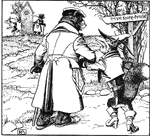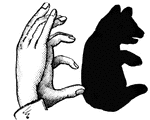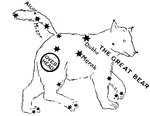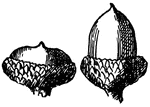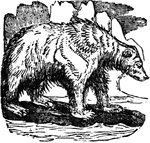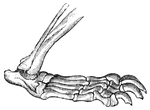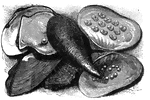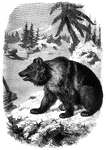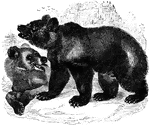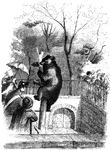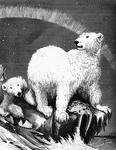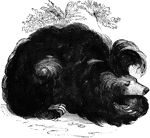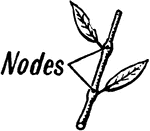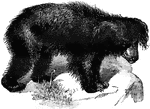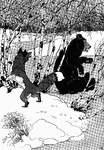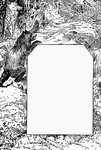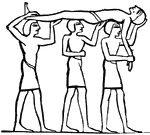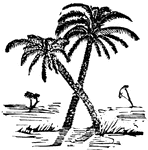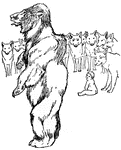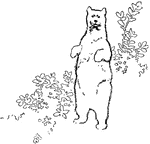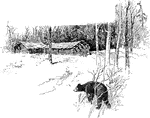
Grizzly Bear
The grizzly bear is the most fierce and powerful of the North American bears. It can weigh up to 800…
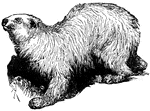
Polar Bear
A large white bear that lives in the Arctic regions of North America. They are powerful swimmers and…

Raccoon
Raccoon, a tree-climbing, nocturnal animal belonging to the bear family and restricted to North and…
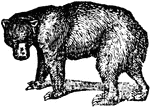
Black Bear
The Black bear inhabits every wooded district in North America, and eats primarily vegetation.

Sow Bug
the Isopoda have a body flattened from above, and bear gills on the abdominal appendages, as in the…
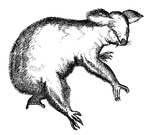
Koala
Koalas are marsupials, which means the females have a pouch of skin into which the very immature young…
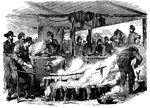
Cooking in Camp
The kitchen of the Fremont Dragoons at Tipton, Missouri. Tipton, which is 38 miles from Jefferson City,…

Confederate Position
"Confederate position near Centreville, Va., at the crossing of the Orange and Alexandria Railway over…

Sea Bear
"It is the size of a large bear; girth at the sholder, five feet, near the tail, twenty inches; fur…

Confederate rams
"Confederate rams from Charleston Harbor attacking the Federal blockading squadron, January 31st, 1863.…

Cumberland Gap
"Cumberland Gap and Heights, Tenn., from the Kentucky side. Cumberland Gap was a place of such importance…
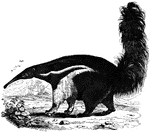
Tamanior
Inhabits most part of South America. About four feet in length. Spends the greater parts of its life…
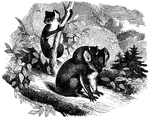
Koala
"Large as a moderate sized dog. It has long, thick and rather course fur, of an ashy-gray color; its…
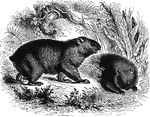
Wombat
"A short-legged, thickset animal, the body two feet long, the tail half an inch long. It lives in burrows…
Peekskill Landing
"View from Peekskill Landing. This view is from Peekskill landing, looking up the river. On the left…
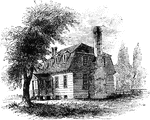
Moore's House
"This is a view from the lawn, looking south. It is a frame building with a brick foundation. At the…

Giant Panda
"Æluropus melanoleucus- A remarkable genus of carnivorous quadrupdes of the arctoid series of the order…

Water Bear
"A water-Bear, or Bear-animalcule (Macrobiotus schultzei), one of the Arctisca or Tardigradam, much…
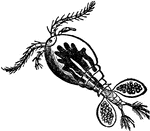
Cyclops communis Water Flea
"Water Flea is a popular name for minute aquatic Crustaceans such as daphnia, cypris, and cyclops. In…
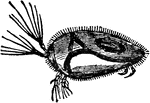
Cypris Unifasciata Water Flea
"Water Flea is a popular name for minute aquatic Crustaceans such as daphnia, cypris, and cyclops. In…
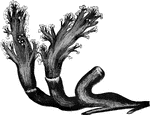
Alcyonium elegans
"In the genus Alcyonium, the polypidom is of a spongy nature, and contains a multitude of minute calcareous…
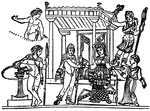
Iphegnia delivers letter to Pylades
"What in this letter is contained, what here, Is written, all I will repeat to thee, That thou mayst…
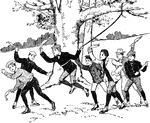
Sling the Monkey
"Sling the Monkey is a capital game, and can be played anywhere where there are trees. One player who…
Whizzer
"Get a circular piece of tin, three inches or more in diameter, and cut it round the edges in the form…

Simple Simon
From a nursery rhyme, Simple Simon Met a Pieman. He went to slide upon the ice, before the…


